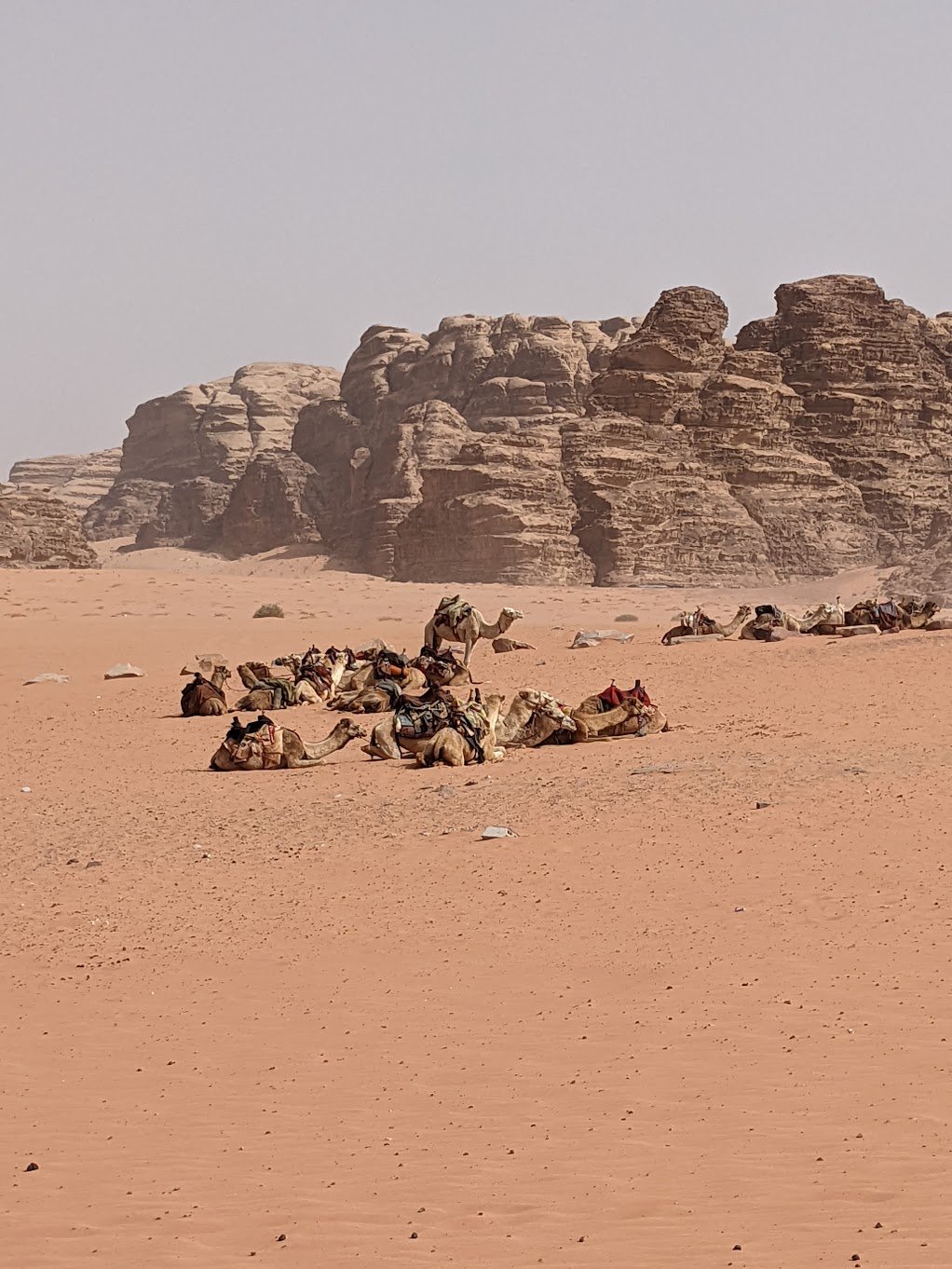
EXPERIENCE JORDAN
Are you looking for an adventure?
Watch this little video…
The Hashemite Kingdom of Jordan was established after World War I, in the Biblical areas of the dome of Gilead, and the territories of the historic people of Ammon, Moab and Edom, all mentioned in the Bible. The nation’s western border lies on the Jordan River extending down to the Red Sea including the Edom Mountains, and her eastern border stretch from the Syrian desert, to the Iraqi plains, and (in the southeast) the Saudi desert. This area was the main commercial route through the desert between Egypt and Mesopotamia.
The landscape is picturesque, and her trails and ancient cities reveal much to help us understand the Bible stories that played out on her sands. We can’t wait for you to see what Jordan has to offer!
Four thousand year old Canaanite gate at Tel Dan
Jordan is not the kind of place you can really grasp in pictures. You have to feel the sand, bounce on the camel back, and sit in the cool shade beside the mountain and sip some tea or lemonade. It is an experience to savor and enjoy, but it will touch you — if you let it. Her people are a joy, and her landscapes are not to be missed!
Why Jordan Matters to Bible Students
Jordan is a land at the heart of the Biblical stage. It is not a mere peripheral place, as some would suspect, but central to many stories from the pages of the Bible.
In fact, many Biblical scholars place the setting of the oldest book of the Bible, the Book of Job, inside this area, but it is impossible to be sure because of the nature of place names from that early period in the Bronze Age. At the same time, that possibility suggests the Bible’s accounts may not begin in Mesopotamia, but rather in Jordan. Even if that speculation eventually proves inaccurate, it is clear by scanning the Bible that many stories were set inside the borders of what is today the Kingdom of Jordan.
Consider some powerful Bible characters whose life was all, or in part, staged in this landscape. There are numerous accounts that establish how central the landscapes of Gilead, Ammon, Moab and Edom are to the geographical setting of the Bible. Consider the Biblical record, with these fourteen powerful stories that took place in what is today’s Jordan:
Abraham and Lot (Selected stories from Genesis 11-25).
Jacob and Esau (from Genesis 25-36).
Moses and Joshua (extensive stories from Numbers and Deuteronomy at the end of the life of Moses).
The grief-filled account of Naomi and her daughter-in-law named Ruth the Moabitess (from the Book of Ruth).
The tale of Jephthah the Judge’s horrid pledge (from Judges 11) and the story of using the “Shibboleth” against fleeing Ephraimites (Judges 12).
The great failure of King David (from 2 Samuel 11-12).
The ministry of Elijah the Prophet (1 Kings 16-21) and the accession of Elisha the Prophet after him (2 Kings 2).
The Magi from the east brought spices that, if fresh, were most likely sourced from Petra (see Matthew 2:11).
John the Baptist (his ministry is recorded in John 1). The powerful story of his martyrdom at the hands of Herod Antipas is detailed in Matthew 14).
Herod Antipas: Speaking of the martyrdom of John, the divorce that led to John’s condemnation (that got him arrested) led to a major problem with the Nabatean King Aretas IV. Herod seemed to have felt guilty for John’s murder and was haunted by it. When he heard of Jesus’ ministry, he said – ‘this is John raised from the dead!’ (Matthew 14:2).
Aretas IV had given Herod Antipas his daughter in marriage, only to have her later snubbed by him. Herod divorced the princess, and she came home to Petra to her father. This led to Aretas fighting Herod’s army at Gamala.
Herod the Great: who was tormented with sickness and sought relief in Callirrhoe happened near the Dead Sea in Jordan.
Jesus, who baptized people at “Bethany beyond the Jordan” here in Matthew 3. A major portion of Jesus’ teaching is recorded as He journeyed the east side of the Jordan for His “Perean Ministry” (see Luke 10-19) and that was largely in this land.
Paul went to the “land of the Arabs” after he his conversion (Galatians 1:15) and then returned once more to Damascus, that was under the rule of the ethnarch Aretas the king. (cf. Acts 9:23, 24).







